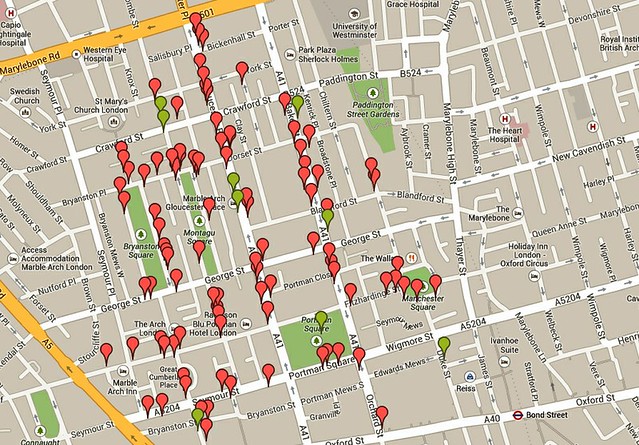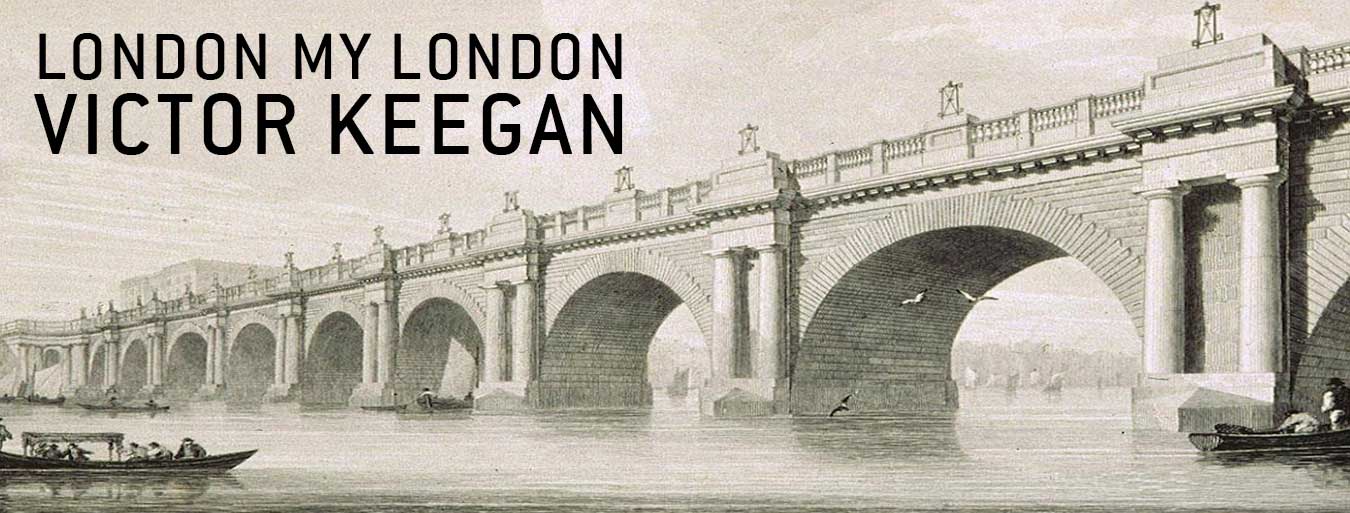
Georgian London, as Dan Cruickshank tells us, was partly constructed from the ill-gotten gains of the sex industry. But a shameful amount of the rest was built from the profits of the slave trade as can be seen on the slavery map of London compiled by researchers at University College, London (above). For some years they have been gathering the – publicly available – compensation paid to slave owners after the 1833 abolition act. Since the addresses of the slave owners had to be included in any claim for compensation it has been possible for the researchers to put together a map – part of which is reproduced above – with mind blowing effect. It is not just the dense concentration of slave owners who lived close to each other in Christian conviviality in places like the Portman estate but the dizzy scale of compensation paid to them.
According to Nicholas Draper and Rachel Evans of University College London – writing in the current newsletter of the London Topographical Society (LTS) – there were 45,000 claims worth a staggering £20 million or at least £2 billion at today’s prices. All of these claims are online at ucl.ac.uk/lbs
The victims received nothing. Indeed, they were not really freed because for the 4 to 6 years after being “freed” they were forced into unpaid labour known as “apprenticeship”.
Large tracts of Bloomsbury, Fitzrovia and Marylebone have already been mapped by the UCL team but the focus of the LTS article is on the Portman estate including Portman Square (and Hom House in particular) where over 100 individuals received compensation.
One of the biggest recipients was James Blair of Portman Square who received £83,530 (worth tens of millions today). About 40% of recipients were women. A very small minority were of colour, presumably the sons or daughters of slave owners. Most of them seem to have been churchgoers rarely questioning what Him up there might have thought of what they were doing to his fellow creatures.
It is a sobering thought, to say the least, that so many of the fine homes in London – not to mention country houses – were built on the wealth created by the slave trade and subsequent compensation. Almost everyone was involved whether directly as plantation owners or as consumers of sugar and spices on which the slave trade thrived. Walking around these areas of London will never again be the same.
To get posts 2 or 3 times a month put your email in the slot on the right of screen
Follow me @vickeegan
